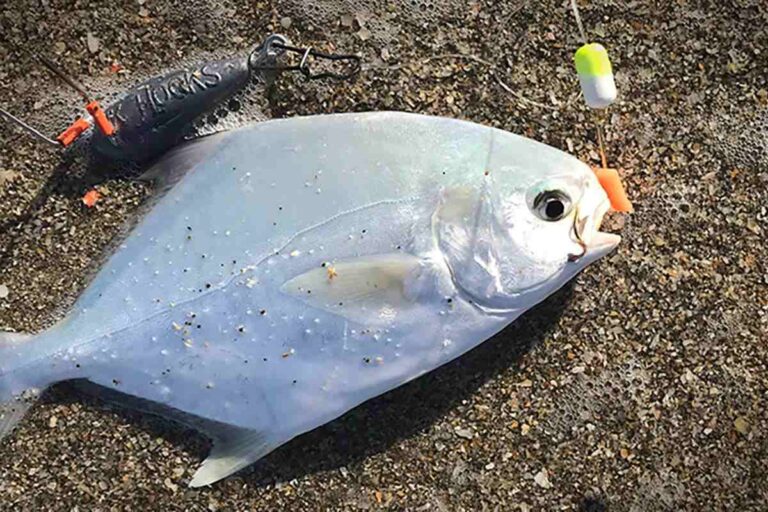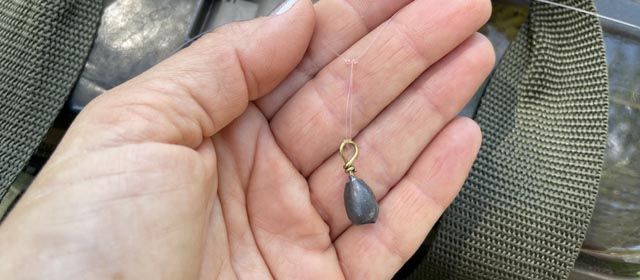Red tide can greatly impact fishing due to its harmful effects on marine life. In addition, the toxins produced by red tide can contaminate fish and shellfish, making them unsafe for human consumption.
This can result in the closure of fishing areas and restrictions on catching certain species, leading to a significant decline in fishing opportunities and economic loss for fishermen and coastal communities. It is important for anglers and seafood consumers to stay informed about red tide outbreaks and follow any advisories or warnings issued by local authorities to ensure their safety.
Credit: www.newsherald.com
Understanding Red Tide And Its Effects On Fish
Red Tide: An Introduction
Red tide is a natural phenomenon that can have a significant impact on the fishing industry. It occurs when there is a rapid increase in the population of certain algae, leading to the discoloration of seawater. This can have detrimental effects on marine life, including fish.
In this section, we will explore the causes and consequences of red tide, and its relationship with algal blooms.
How Red Tide Occurs
Red tide is primarily caused by the overgrowth of a microscopic organism called karenia brevis. This alga typically lives in the gulf of mexico but can also be found in other coastal areas. The factors that contribute to the proliferation of karenia brevis include:
- Nutrient-rich waters: Excess nutrients such as nitrogen and phosphorus can fuel the growth of algae, leading to red tide.
- Warm water temperatures: Higher temperatures provide ideal conditions for the rapid reproduction of karenia brevis.
- Calm water conditions: Red tide is more likely to occur when the water is calm, as it allows the algae to accumulate and bloom.
When these conditions align, karenia brevis multiplies rapidly, forming dense patches of red or brown algae on the surface of the water. These patches can extend for miles and can even be visible from space.
The Relationship Between Red Tide And Algal Blooms
Red tide is a specific type of harmful algal bloom (hab). While red tide is most commonly associated with karenia brevis, other species of algae can also cause algal blooms. Here are some key points to understand about the relationship between red tide and algal blooms:
- Algal blooms: Algal blooms occur when there is an excessive growth of algae in aquatic environments. They can be caused by various factors, including pollution and nutrient run-off.
- Harmful effects: Algal blooms can have severe consequences for marine ecosystems. They consume oxygen, leading to oxygen depletion and the death of other marine organisms such as fish, shellfish, and marine mammals.
- Red tide’s impact on fishing: Red tide can significantly impact fishing activities. When red tide occurs, fish tend to avoid the affected areas as the algae can release toxins that are harmful to them. This can result in a decline in fish populations and a decrease in catch rates for fishermen.
Red tide is a natural phenomenon that is linked to the overgrowth of specific algae, such as karenia brevis. Its occurrence can have detrimental effects on fish populations and impact fishing activities. Understanding the causes and consequences of red tide is crucial for the fishing industry and marine conservation efforts.
Investigating The Effects Of Red Tide On Fish
Does Red Tide Affect Fishing?
Red tide and oxygen depletion:
- Red tide refers to the occurrence of harmful algal blooms in coastal waters, caused by certain species of algae.
- These algae produce toxins that can have detrimental effects on marine life, including fish.
- Red tide blooms can lead to oxygen depletion in the water, creating an inhospitable environment for fish.
- As the algae multiply and decay, they consume oxygen, leaving less oxygen available for fish to survive.
- Oxygen depletion can result in fish suffocation or cause them to vacate the affected areas in search of oxygen-rich waters.
Red tide and fish mortality rates:
- The toxins released by red tide algae can directly kill fish, leading to increased fish mortality rates.
- These toxins affect fish by damaging their gills, liver, and nervous system.
- Fish exposed to high concentrations of red tide toxins may experience respiratory distress, organ failure, and even death.
- Mortality rates can vary depending on factors such as the species of fish, toxin concentration, and duration of exposure.
- Fish species that are more sensitive to red tide toxins, such as shellfish, can be particularly affected.
Red tide’s impact on fish behavior:
- Red tide can significantly influence the behavior of fish, altering their feeding and movement patterns.
- Some fish avoid areas with high concentrations of red tide algae, leading to reduced fishing activity in affected regions.
- Fish that do encounter red tide toxins may exhibit abnormal behavior, such as reduced feeding activity or increased vulnerability to predation.
- Red tide can disrupt the food chain, affecting the availability of prey for fish and leading to changes in their foraging behavior.
- The long-term effects of red tide exposure on fish behavior and population dynamics are still being studied.
Red tide can have profound effects on fishing, impacting fish through oxygen depletion, increased mortality rates, and altered behavior. Understanding the mechanisms by which red tide affects fish is crucial for managing and mitigating the impacts of harmful algal blooms on fisheries and coastal ecosystems.
Examining The Consequences For Fishing Industry
Red tide, also known as harmful algal blooms (habs), is a natural phenomenon that occurs when certain species of algae multiply quickly, leading to discoloration and contamination of seawater. Beyond its visual impact, red tide can have significant consequences for the fishing industry.
In this section, we will examine the economic impact of red tide on fisheries, the challenges faced by commercial fishermen, and how red tide influences recreational fishing.
Economic Impact Of Red Tide On Fisheries
- Red tide can cause devastating effects on the fishing industry, leading to substantial financial losses. Here are a few key points to consider:
- Closure of fishing grounds: Government regulations often require the closure of affected areas to prevent human consumption of contaminated seafood. This closure can result in a temporary halt in fishing activities.
- Decline in seafood demand: Red tide can significantly reduce consumer confidence in seafood products due to concerns about their safety. This decreased demand can lead to reduced prices and financial losses for fishermen and seafood businesses.
- Negative ripple effect: The impact of red tide extends beyond fishermen. It affects seafood wholesalers, retailers, and even restaurants that depend on fresh seafood. The entire supply chain feels the economic strain.
Challenges Faced By Commercial Fishermen
- Commercial fishermen face numerous challenges when red tide strikes. Consider the following points:
- Reduced catch: Red tide can cause fish kills or displace fish populations from their usual habitats. This displacement makes it difficult for commercial fishermen to find and catch fish, resulting in reduced harvests and income.
- Increased operating costs: Commercial fishermen may need to travel longer distances or change their fishing methods to find unaffected areas. These additional costs for fuel and equipment can further impact their profitability.
- Limited market access: With fishing grounds closed or seafood quality compromised, commercial fishermen may struggle to find buyers for their catches. This can lead to spoilage and waste of valuable resources.
Red Tide’S Influence On Recreational Fishing
- Red tide not only affects commercial fishermen but also impacts recreational fishing. Explore the following key considerations:
- Impaired fishing experience: Red tide can disrupt the recreational fishing experience due to its negative effects on fish populations. Anglers may find it challenging to catch fish, diminishing the enjoyment they seek from their fishing trips.
- Access limitations: To protect public health, authorities may limit or close recreational fishing areas affected by red tide. This restriction can restrict fishing opportunities for enthusiasts and tourists.
- Tourism decline: Areas heavily dependent on recreational fishing tourism can experience a decline in visitors due to red tide outbreaks. This can have far-reaching economic consequences for local businesses, such as charter boat operators, bait and tackle shops, and hospitality providers.
Red tide poses significant challenges to the fishing industry, impacting both commercial fishermen and recreational fishing enthusiasts. The economic ramifications can be severe, with closures, reduced demand, and increased operating costs affecting the livelihoods of many. It is crucial for fisheries management and stakeholders to understand and address the repercussions of red tide to support sustainable fishing practices.
Conclusion
Based on the information presented, it is clear that red tide does indeed have a significant impact on fishing. The harmful algal blooms associated with red tide release toxins into the water, causing fish kills and negatively affecting the overall health and abundance of marine life.
Fishermen and women are faced with reduced catch rates and limited opportunities, as fish tend to migrate away from affected areas. Red tide can also harm the fishing industry as a whole, leading to economic losses and the potential for job instability.
As such, it is crucial for anglers and fishing enthusiasts to stay informed about the presence of red tide in their local fishing spots and take necessary precautions to minimize any potential risk. By staying up-to-date with red tide alerts, practicing catch-and-release techniques, and supporting research efforts aimed at understanding and combating red tide, we can work towards preserving our marine ecosystems and ensuring sustainable fishing practices for future generations.




